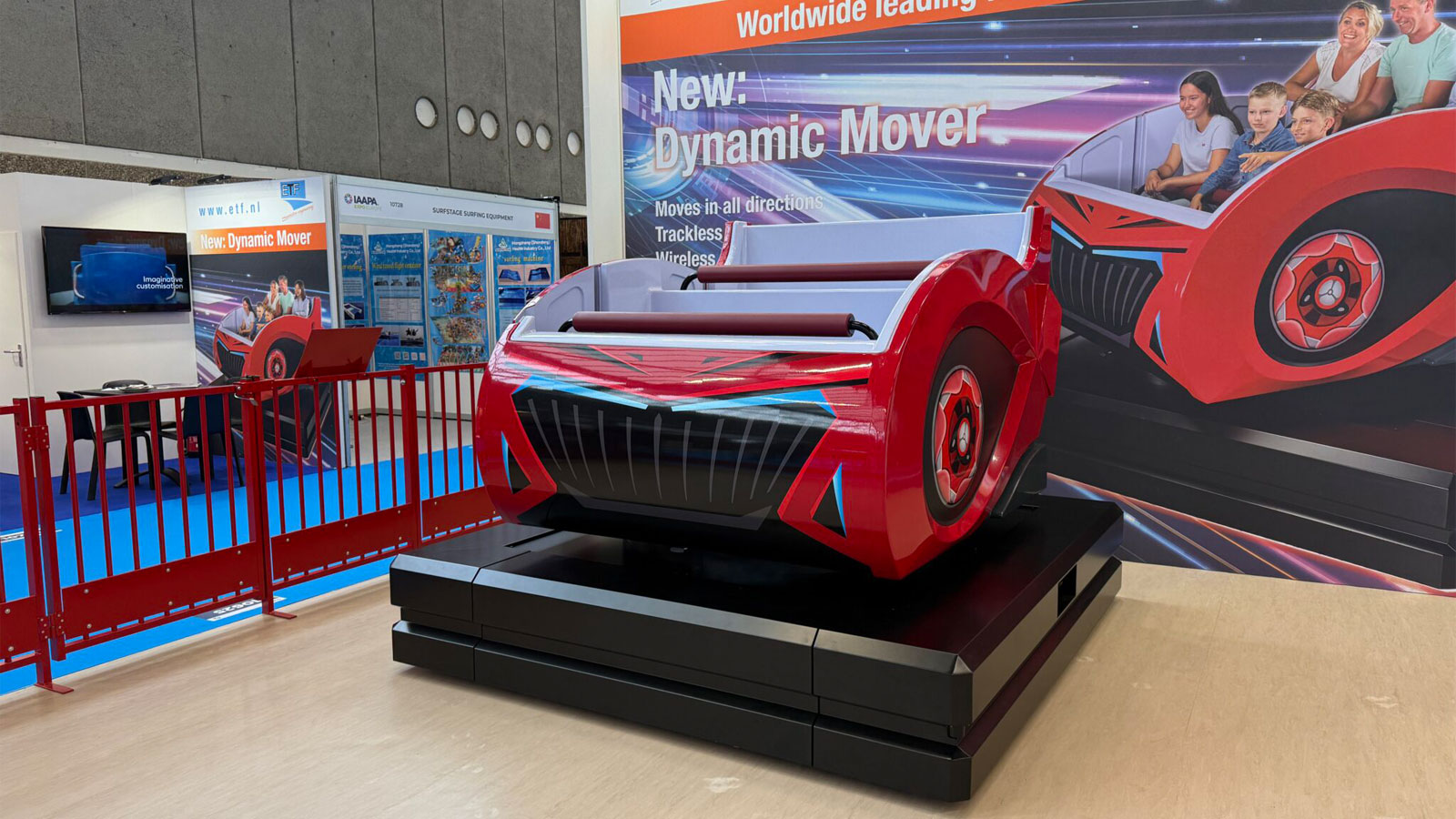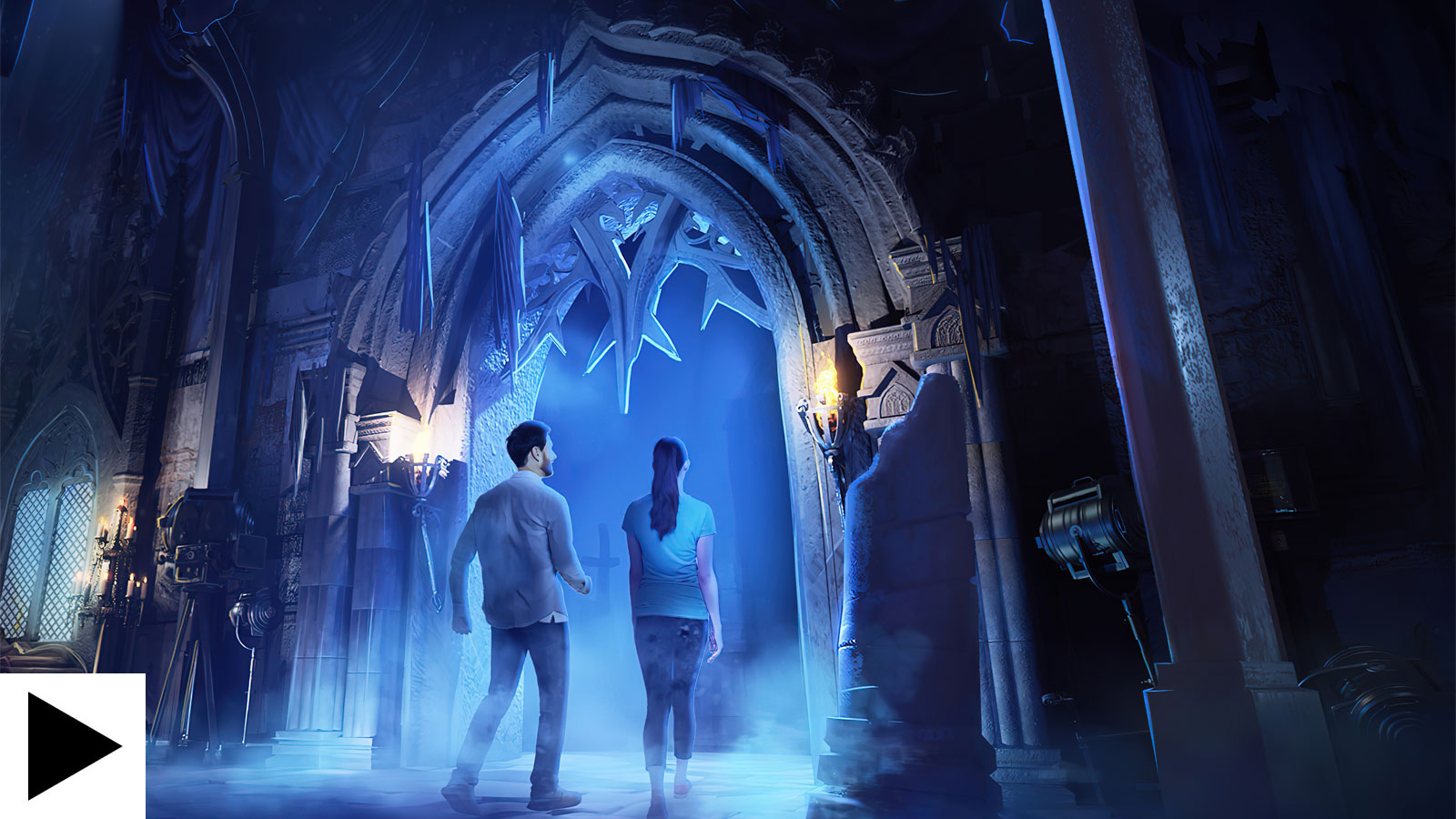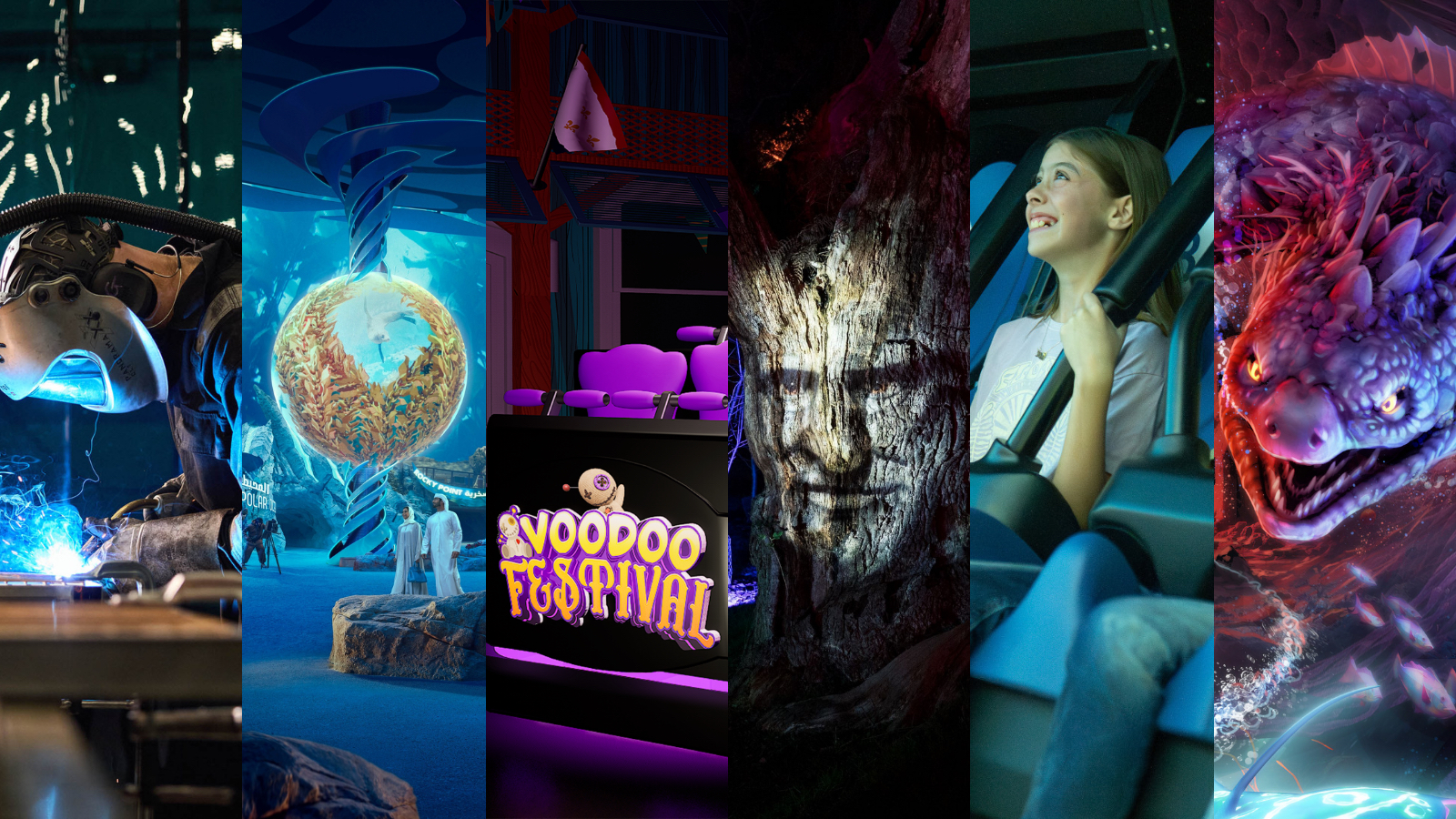|
ETF recently announced an expansion to its portfolio with the 2.0 addition of its ride system. Called the Dynamic Mover, the company has promised not just an evolution of its current offering, but a “revolution” of what it has on offer

Dark Ride Database | 11 Oct 2024

 The Dynamic Mover can carry up to eight passengers Credit: Dark Ride Database The Dynamic Mover can carry up to eight passengers Credit: Dark Ride Database
ETF Ride Systems is one of the biggest players in the dark ride industry. The company is mostly known for their high-quality and reliable ride systems, of which the trackless variant is the most popular. ETF recently announced an expansion of their portfolio with a new addition: the Dynamic Mover. The company invited Dark Ride Database to visit their factory and be the first to experience this brand-new technology.
ETF Ride Systems started as part of the ETF Group, finding its roots with the foundation of ETF Machinefabriek in 1951. The machine factory designs and manufactures machinery for the textile industry.
During the ‘80s, the company started to branch off into industrial automation for that same industry. It was during these developments that recently retired CEO Ruud Koppens saw the potential to use these systems in the leisure industry. This led to the creation of a new division in 1997: ETF Ride Systems.
ETF Ride Systems is purely focused on ride systems for the leisure industry. The first ride system they debuted was the trackless Multi Mover, which was supplied for the dark ride Laberinto del Minotauro in Terra Mítica (Spain) in 2000. In the following years, the company introduced new dark ride systems (both tracked and trackless) and even outdoor ride systems, such as the Panorama Pedal Plus (like Kaninlandsbanan in Liseberg) or Suspended Flight (like Volo da Vinci in Europa-Park). However, dark ride systems remain their most successful.
In the 24 years since Laberinto del Minotauro, the company has supplied trackless ride systems for over 60 dark rides worldwide, more than any other competitor. For many years, their portfolio consisted of three different ride systems: the Mystic Mover, Multi Mover and the Xperience Mover. The Multi Mover and Xperience Mover are also available trackbound. From now on, these ride systems have a new brother: the Dynamic Mover.
Setting high standards
The new Dynamic Mover was officially presented to the public at the IAAPA Euro Expo in Amsterdam. Dark Ride Database also visited the company’s facility two weeks ago and sat down with Anton Keim (project manager) and Ruud van Vijfeijken (engineer) to talk about the development of the Dynamic Mover.
ETF Ride Systems is currently the market leader when it comes to dark ride systems. The company wants to remain in this position and thus needs to stay ahead of its competition. This is why the board of ETF made the decision to invest in the development of a new ride system.
For this new development, ETF didn’t consult any (potential) customers for ideas and specifications but instead relied on their many years of experience working with many well-known names. On top of that, through his many years of experience in the industry, Ruud Koppens also had a very clear picture of the direction he wanted to go with the new mover.
This made the design process of the vehicle a different kind of engineering project as opposed to designing for a specific customer. As such, the board came with a broad, yet clear wish for their engineering department: “The request of the board was to deliver an ETF 2.0 ride system, not just an evolution of our current offerings, but a revolution,” explains Keim. The new system needed to be capable of things the older systems weren’t.
The original trackless systems follow an inductive wire in the floor. It’s a trusted and cost-efficient technique but has a few downsides, mostly that it limits complex layouts with overlapping tracks. The passenger cabin of the Multi Mover and Xperience Mover can rotate, but the base of the vehicle cannot rotate while standing still on a spot. The Mystic Mover can rotate on a spot but is not capable of moving sideways (which is called ‘crabbing’). Another downside of the old system is that once the wire in the floor is placed, the ride path cannot be changed without reinstalling the wire.
The project team set up requirements that posed several challenges for the designers. In terms of features, they wanted a higher performance in both speed and acceleration, omnidirectional movement, and the elimination of the guidance wire. Furthermore, the vehicle needed the capability to navigate slopes effectively and remain cost-effective.
With these specifications and wishes given, the design team got to work.
Research and Development
Of course, the design team looked at competing ride system manufacturers. But for the development of this new mover, they didn’t just stick to the world of themed entertainment. A broad approach was taken when it came to finding inspiration for the new system as Automated Guided Vehicles, or AGVs, can be found in many places all over the world. From the Amazon warehouses to the well-known car manufacturing plants and even restaurants, AGVs are everywhere.
One thing was clear from the start: while many options were available, not a single product was perfect for the application of a dark-ride vehicle. Keim explains: “AGVs in factories, for example, travel at a relatively slow pace and do not transport guests. So, they can use solutions which wouldn’t work for us, as those solutions can have a negative impact on the comfort of the ride system.” The team had to look for the best components in each example and combine them to get the optimal result.
“Take omnidirectional wheels for example”, continues Keim, “If those are not dimensioned correctly you can see the vehicle wobble around. A chassis in a car factory can handle that, but for guests, it just wouldn’t work.”
All of the research and development work was done in an astonishingly short period. The start of the project was made on 1 November 2023, so in a time span of only 10 months, they completed their research, and engineering and even manufactured a prototype.
Introducing: the Dynamic Mover
ETF Ride Systems has dubbed its new ride system the ‘Dynamic Mover’. A suitable name if you look at all the features of the system.
When looking at the top part, the Mover does not differ much from the Multi Mover. The gondola consists of two rows that each have space for three riders. Each row contains a single lap bar restraint, just like the Multi Mover. This type of door has already been seen in some versions of the Xperience Mover. The gondola is attached to the base through a rotating platform, making the gondola capable of rotating 360° while the base is standing still.
The base of the vehicle also has a few surprises up its sleeve. The Dynamic Mover features a square-shaped base as opposed to the round bases often used by ETF. This is where the hardware for the ride vehicle, like the engines, wheels, battery and computer, is located. The base is capable of a higher acceleration compared to the other Movers. It can also rotate on the spot, as well as move in each possible direction regardless of its orientation, making the movement omnidirectional.
A major advantage of this is the loss of a minimum turn radius for the vehicles. On the other trackless ETF ride systems, every turn needs a radius of at least 1,3 metres and track-bound variants even require 2,5 metres. This limits the freedom a designer has when creating a dark ride. The new omnidirectional Dynamic Mover can make sharp 90° turns, even without a radius, and thus can make much more efficient use of space.
The rotational speed of the system also got an upgrade. The base can rotate at a speed of 10 rounds per minute (rpm) and the gondola at a speed of 10 rpm. When combined, this makes a top capable of rotating at a speed of 20 rpm. If the base and gondola turn against each other, the base can reorientate itself, while the gondola keeps facing in the same direction. This is a major improvement as their Xperience Mover ‘only’ has a top rotational speed of 8 rounds per minute.
And the new features don’t end there. To fully leverage these new capabilities, the system’s navigation has been upgraded to be truly trackless.
No track, no wire, but still guidance
While the current ETF trackless ride systems perform well for most rides, they come with certain drawbacks. For instance, whenever a dead-end is included in the design, a straight section 2,5 times the length of the vehicle is required, which limits flexibility. Additionally, the guidance wire must be physically installed in the floor, which increases costs due to the need for special finishing to ensure it remains truly invisible. This setup also offers no flexibility, making it difficult to correct design mistakes or make changes once the installation is complete.
For the Dynamic Mover, this had to change. In line with their research on vehicle movement, ETF explored a broader range of options for navigating the vehicle through various spaces. This research was somewhat more straightforward compared to the vehicle movement studies, as the applications for freely navigating space are even more extensive than those for AGVs. Freely moving vehicles are often deployed in environments far more dynamic than a theme park, where every movement, effect, sound, and video is precisely timed down to the millisecond.
Keim explains: “There are quite a lot of options, but at some point, you have to make a decision because time keeps running. The decision was made on the basis of advantages and disadvantages, but was also based on the cost of the solution.”
The Dynamic Mover navigates using pre-scanned routes. The entire path through the building is scanned in advance, creating a 2D map of the attraction. Based on this map, the vehicles’ route is programmed. Once the programming is complete, the vehicles follow the designated path, with onboard scanners ensuring they stay on course.
For safety reasons, the vehicles are equipped with two sensors on opposite corners of the base. These will create a 360° view around the vehicle and scan for objects or persons in their ride path. If it detects something that should not be there, the vehicle comes to a stop.
While these innovations allow for easier adjustments to the ride’s layout and speed during or after installation compared to their current ride models, it doesn’t mean such changes will happen frequently or even at all. Typically, the contracts between ETF and its customers focus more on THRC (Theoretical Hourly Ride Capacity) rather than the ability to modify the ride during operation. For this reason, a significant emphasis is placed on the design phase of ride development to finalise the vehicle’s layout and speed as early as possible.
This version of the guidance system is unlikely to be integrated into ETF’s older lineup of ride systems, as it raises costs without providing a necessary benefit for those models. Ultimately, ETF’s ability to find a balance between cost-effectiveness and modern, dynamic features is what makes their trackless vehicles so popular across the industry.
Showing the Dynamic Mover to the World
So, the only question left to answer now is: how does it ride? ETF granted us permission to test the work-in-progress version of the program, which is also being showcased at the IAAPA Euro Expo in Amsterdam. Keep in mind that this program could only use a 6 by 6 metres square and as such had very limited space to move around.
The first thing to notice is that this new version is quick! Not in terms of top speed, but in terms of acceleration and deceleration. This makes for an entirely different ride compared to what is possible with their current ride systems. It also drives around very smoothly, both in a forward direction as well as during all the omnidirectional movement. There is no noticeable difference between any direction, or the direction change itself.
Another great new feature on the Dynamic Mover is the ability to rotate both the top and the bottom of the vehicle, enabling it up to 20 rpm. While we weren’t able to experience this at top speed, it did make a fast rotation that came near its top speed. Once again, it felt very smooth, even though both the vehicle and the cabin itself were moving.
ETF officially presented their newest ride system at the IAAPA Euro Expo in Amsterdam. At the booth of the company, test setup was shown where the vehicle drove around to demonstrate all the functions of the vehicle. It performed the same tricks as we experienced two weeks earlier.
The Dynamic Mover is a great new product that makes ETF Ride Systems able to compete on the next-level ride systems. The older ones are still solid products and probably won’t stop selling anytime soon, but the Dynamic Mover is definitely a step up. With more action-based dark rides being built over the years, this ride system will definitely be a seller.
Republished with permission from Dark Ride Database
Rides
|
|






Supplier Showcase 2025: The biggest attractions projects landing worldwide this year
|